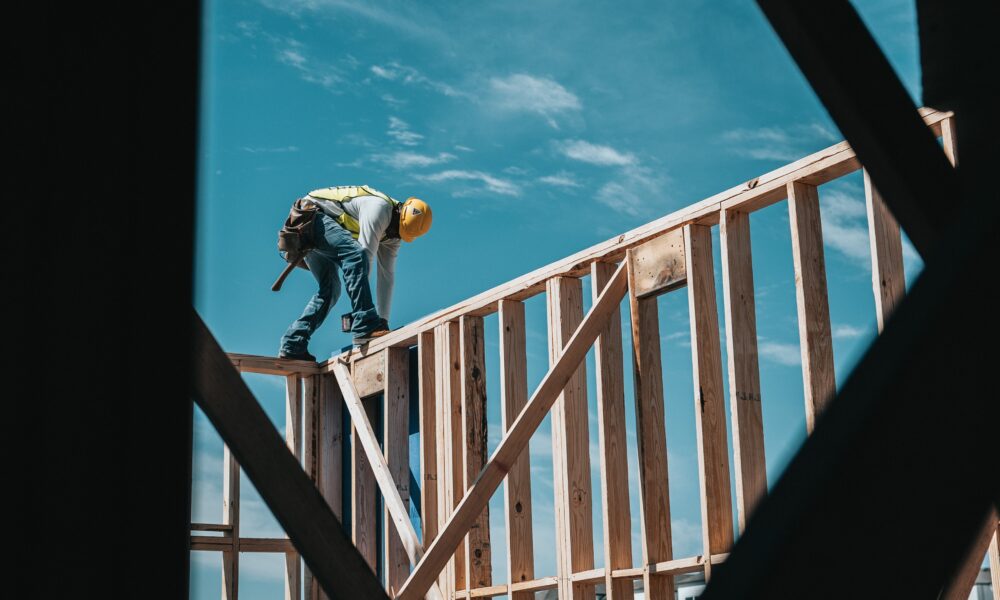Before concrete and steel, wood was the predominant material in many human endeavours. Nowadays, while wood has been mostly replaced, its usage remains common. Wood construction specialists, however, continue to rely on only a few species, limiting their survivability against climate change.
To ensure the viability of forestry and building industries, there must be long-term solutions that reduce the impact of such environmental disturbances. Peter Osborne, a PhD candidate at McGill’s Peter Guo-hua Fu School of Architecture, believes that building with more functionally diverse and ecological resilient wood species is the key.
According to Osborne’s paper, ‘functional traits’ are biological characteristics of plants associated with their growth, survival, and reproduction. A ‘plant-building trait-based’ approach, therefore, analyzes tree species based on their ecological and construction-relevant traits.
“[Trait-based ecology examines] characteristics within aspecies, such as drought tolerance, leaf area, and seed disperaldiameter at breast height that contribute to forest ecosystem resilience. ,” Osborne said in an interview with The Tribune. “[Building-related traits] would be characteristics of wood that are desired in [construction, within] certain ranges of mechanical and physical properties such as fire resistance and pest tolerance.”
By grouping species of similar construction-relevant traits, Osborne compared the current needs of the industry with the internal characteristics of each species. One of his case studies, performed in southeastern Quebec, found that although the construction industry’s perspective designates softwood from coniferous trees as the most desirable wood, overreliance on a few of these species jeopardizes construction systems.
“Softwoods grow faster and straighter. And in Canada, they are extremely abundant,” Osborne said. “The workability, and the general physical and mechanical properties of these species are oftentimes advantageous.”
To enhance the ecological resilience of our forests, Osborne’s forest-building approach advocates for a greater selection of tree species with diverse functional traits. The construction industry should then extend its repertoire of wood construction techniques to encompass a more extensive spectrum of wood species. To achieve this, the forestry and wood industries need to work synergistically.
Coniferous trees, often used in wood-building, would be an ideal candidate for growing ecologically resilient, climate-adapted forests. Unfortunately, coniferous trees are prone to both fire and damaging insect species such as the moth genus, Dendrolimus.
Conversely, fire cannot climb the tight, smooth bark of deciduous trees, which can reduce forest fire spread. However, the wood from these trees can easily bend and form knots, which is considered inadequate for construction lumber. Although not used structurally, these hardwoods can still be used in flooring for high durability. Osborne elaborated on this point by alluding to silviculture—the science of controlling and managing forests.
“There are also silvicultural reasons why [hardwoods] are not as utilized—primarily due to their age, the time that they have to take to grow, and the facility silvicultural applications that surround them,” Osborne said. “So, a maple [hardwood species] forest is not as functionally convenient to harvest as a pine forest.”
To examine long-term forest dynamics within the region where these tree species grow, Osborne simulates them on the LANDIS-II model by testing four forest management approaches—business-as-usual (BAU), climate change adaptation (CCA), and two variants of functional diversification network (FDN)—under different climate scenarios—current, warm, and hot. Then, he measures the changes in harvest output and species composition of the trees.
“[Although] in the business-as-usual [BAU] approach, there is a substantial increase in harvest volume[,] unless we somehow find ways to utilize the wood more efficiently[,] we cannot really do it under this approach,” Osborne said. “Under the climate change adaptation [CCA] and the functional diversification network [FDN] approach, we find that the standard building groups (BGs) stayed more or less the same in their output, if not increased compared to the BAU approach. But where we found the most increases were obviously BG3-BG7 [hardwoods].”
Furthermore, he found a 40 per cent increase in short-term harvest volume in the CCA and FDN approaches, resulting from a timely harvest at early growth stages. Prioritizing species with overlapping functional traits for harvest while planting ecologically foreign species would increase forest functional diversity.
Although the CCA and FDN approaches seem to offer promising avenues, the striking reality is that the outcome remains uncertain. Greater functional diversity and ecological resilience may increase chances of survival in case of ecological disturbances.
“This calls for designers and engineers in the industry to become more adaptable in the future to survive in any of these [climate] scenarios,” Osborne explained.
To prepare for the unforeseeable future, it is critical to work with, and not against, our forests—by increasing the adaptability of wood construction and creating a dynamic and flexible usage of wood in response to current needs.









